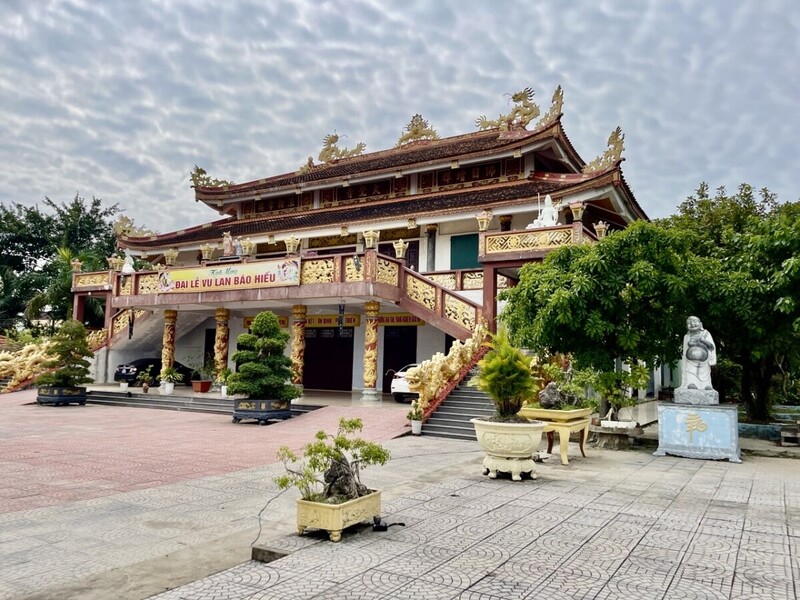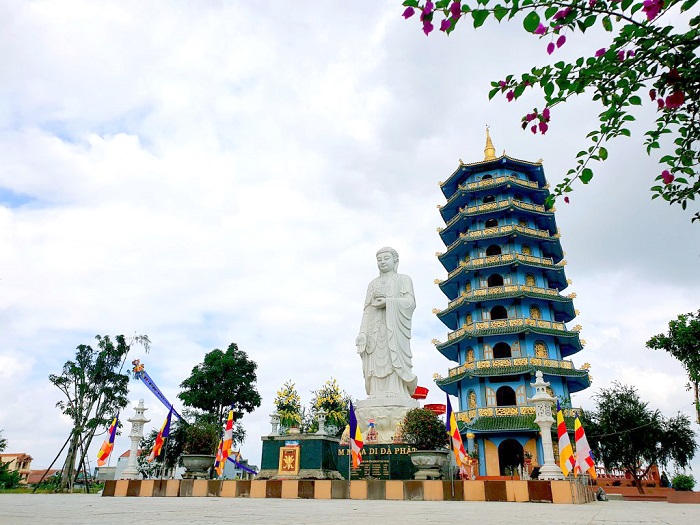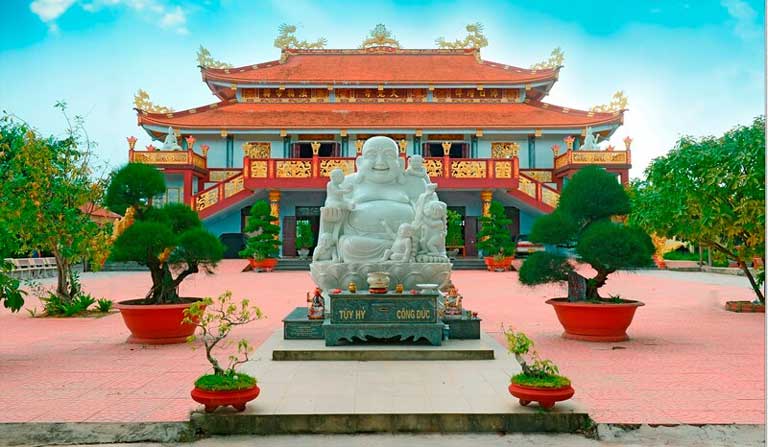Dai Giac Pagoda
1. Overview
Đại Giác Pagoda (Vietnamese: Chùa Đại Giác) is a well-known Buddhist temple located in Đồng Hới City, the capital of Quảng Bình Province, central Vietnam. Situated near the banks of the Nhật Lệ River, the pagoda is not only a religious center but also a peaceful retreat amidst the busy city life. It is a place where locals gather to pray, meditate, and participate in Buddhist festivals, making it an important cultural and spiritual site for the community.
2. Historical Background
Chùa Đại Giác was established in the early 20th century and has since become one of the most active Buddhist temples in Đồng Hới. Despite suffering damage during the wars, particularly during the American War (Vietnam War), the temple was later restored and expanded through the efforts of local Buddhist followers and the government.
Over time, Đại Giác Pagoda has become a center for Buddhist teachings, charity activities, and community engagement, helping to preserve and promote Buddhist traditions in modern Quảng Bình.
3. Architectural Features
Đại Giác Pagoda is a harmonious blend of traditional Vietnamese Buddhist architecture and modern construction. The temple is known for its peaceful layout, elegant structures, and spiritual symbolism. Key features include:
-
Tam Quan Gate: The elegant three-arched gate welcomes visitors and represents the entry into a sacred space.
-
Main Hall (Chánh Điện): Inside the main worship hall are large statues of Shakyamuni Buddha, Bodhisattvas, and various Buddhist symbols. The altar is beautifully decorated with incense, candles, and lotus motifs.
-
Bell Tower and Drum Tower: These towers are commonly used during ceremonies. The large bronze bell resonates deeply, symbolizing the voice of the Buddha calling beings to awaken.
-
Spacious Courtyard and Garden: The pagoda has a tranquil courtyard with bonsai trees, lotus ponds, and shaded paths—an ideal place for walking meditation and quiet reflection.
4. Cultural and Religious Importance
Chùa Đại Giác plays a vital role in the spiritual life of people in Đồng Hới and nearby areas. Its influence extends beyond worship into education and humanitarian work:
-
🛐 Worship and Ceremonies: The pagoda holds regular ceremonies such as Buddha’s Birthday (Vesak), Vu Lan Festival, and Lunar New Year Prayers, drawing many devotees.
-
📿 Buddhist Education: The temple organizes Dharma talks, meditation classes, and retreats for both lay followers and monastics.
-
🎁 Charity Work: Đại Giác Pagoda is known for its charitable activities, including food donations, disaster relief efforts, and scholarships for poor students.
-
🧘 Spiritual Retreat: Locals and tourists alike visit the pagoda to find inner peace and participate in mindfulness practices.
5. Visiting Information
-
Location: Đồng Hới City, Quảng Bình Province, Vietnam
-
Opening Hours: Open daily from morning until early evening
-
Entrance Fee: Free (donations appreciated)
-
Accessibility: Easily reachable from the city center by car, bicycle, or on foot
-
Nearby Attractions: Nhật Lệ Beach, Quảng Bình Gate, Tam Tòa Church ruins
-
Ideal For: Pilgrims, spiritual travelers, families, and those seeking quiet reflection in the city
6. Conclusion
Đại Giác Pagoda is more than just a religious site—it is a spiritual refuge and a community hub that embodies the essence of Vietnamese Buddhist tradition. With its serene atmosphere, meaningful ceremonies, and commitment to social good, it welcomes all who seek peace, compassion, and understanding. Whether you are a devout Buddhist or a curious traveler, a visit to Đại Giác Pagoda offers both cultural insight and inner tranquility.




